Physical Properties of Thermoplastic Starch Derived from Natural Resources and Its Blends: A Review
Abstract
1. Introduction
2. Biopolymer
3. Starch
4. Thermoplastic Starch
4.1. Thermoplastic Cassava Starch
4.2. Thermoplastic Corn Starch
4.3. Thermoplastic Sugar Palm Starch
5. Thermoplastic Starch Blends
5.1. Starch/Polyvinyl Alcohol (PVA)
5.2. Starch/Poly Lactic Acid (PLA)
5.3. Starch/Polybuthylene Succinate (PBS)
6. Thermoplastic Starch Incorporated with Natural Fibre
6.1. Natural Fibre
6.2. Cassava Bagasse Fibre
6.3. Sugarcane Fibre
6.4. Bamboo Fibre
7. Application of Starch-Based Biopolymer
8. Conclusions
Author Contributions
Funding
Institutional Review Board Statement
Informed Consent Statement
Data Availability Statement
Acknowledgments
Conflicts of Interest
References
- Sahari, J.; Sapuan, S.M.; Zainudin, E.S.; Maleque, M.A. Thermo-mechanical behaviors of thermoplastic starch derived from sugar palm tree (Arenga pinnata). Carbohydr. Polym. 2013, 92, 1711–1716. [Google Scholar] [CrossRef] [PubMed]
- Mrowiec, B. Plastic pollutants in water environment. Environ. Prot. Nat. Resour. J. Inst. Environ. Prot. Natl. Res. Inst. 2017, 28, 51–55. [Google Scholar] [CrossRef]
- Ferreira, D.C.M.; Molina, G.; Pelissari, F.M. Biodegradable trays based on cassava starch blended with agroindustrial residues. Compos. Part B Eng. 2020, 185, 107682. [Google Scholar] [CrossRef]
- Domene-López, D.; Delgado-Marín, J.J.; Martin-Gullon, I.; García-Quesada, J.C.; Montalbán, M.G. Comparative study on properties of starch films obtained from potato, corn and wheat using 1-ethyl-3-methylimidazolium acetate as plasticizer. Int. J. Biol. Macromol. 2019, 135, 845–854. [Google Scholar] [CrossRef] [PubMed]
- Bergel, B.F.; Machado, L.; Marlene, R.; Santana, C. Comparative study of the influence of chitosan as coating of thermoplastic starch foam from potato, cassava and corn starch. Prog. Org. Coat. 2017, 106, 27–32. [Google Scholar] [CrossRef]
- Campos, A.; Sena Neto, A.R.; Rodrigues, V.B.; Luchesi, B.R.; Mattoso, L.H.C.; Marconcini, J.M. Effect of raw and chemically treated oil palm mesocarp fibers on thermoplastic cassava starch properties. Ind. Crop. Prod. 2018, 124, 149–154. [Google Scholar] [CrossRef]
- Ilyas, R.A.; Sapuan, S.M.; Ibrahim, R.; Abral, H.; Ishak, M.R.; Zainudin, E.S.; Asrofi, M.; Atikah, M.S.N.; Huzaifah, M.R.M.; Radzi, A.M.; et al. Sugar palm (Arenga pinnata (Wurmb.) Merr) cellulosic fibre hierarchy: A comprehensive approach from macro to nano scale. J. Mater. Res. Technol. 2019, 8, 2753–2766. [Google Scholar] [CrossRef]
- Hazrol, M.D.; Sapuan, S.M.; Ilyas, R.A.; Othman, M.L.; Sherwani, S.F.K. Electrical properties of sugar palm nanocrystalline cellulose reinforced sugar palm starch nanocomposites. Polimery 2020, 65, 363–370. [Google Scholar] [CrossRef]
- Rozilah, A.; Aiza Jaafar, C.N.; Sapuan, S.M.; Zainol, I.; Ilyas, R.A. The effects of silver nanoparticles compositions on the mechanical, physiochemical, antibacterial, and morphology properties of sugar palm starch biocomposites for antibacterial coating. Polymers 2020, 12, 2605. [Google Scholar] [CrossRef]
- Abral, H.; Basri, A.; Muhammad, F.; Fernando, Y.; Hafizulhaq, F.; Mahardika, M.; Sugiarti, E.; Sapuan, S.M.; Ilyas, R.A.; Stephane, I. A simple method for improving the properties of the sago starch films prepared by using ultrasonication treatment. Food Hydrocoll. 2019, 93, 276–283. [Google Scholar] [CrossRef]
- Syafri, E.; Sudirman; Mashadi; Yulianti, E.; Asrofi, M.; Abral, H.; Sapuan, S.M.; Ilyas, R.A.; Fudholi, A. Effect of sonication time on the thermal stability, moisture absorption, and biodegradation of water hyacinth (Eichhornia crassipes) nanocellulose-filled bengkuang (Pachyrhizus erosus) starch biocomposites. J. Mater. Res. Technol. 2019, 8, 6223–6231. [Google Scholar] [CrossRef]
- Asrofi, M.; Sapuan, S.M.; Ilyas, R.A.; Ramesh, M. Characteristic of composite bioplastics from tapioca starch and sugarcane bagasse fiber: Effect of time duration of ultrasonication (Bath-Type). Mater. Today Proc. 2020, in press. [Google Scholar] [CrossRef]
- Asrofi, M.; Syafri, E.; Sapuan, S.M.; Ilyas, R.A. Improvement of biocomposite properties based tapioca starch and sugarcane bagasse cellulose nanofibers. Key Eng. Mater. 2020, 849, 96–101. [Google Scholar] [CrossRef]
- Abedinia, A.; Nafchi, A.M.; Sharifi, M.; Ghalambor, P.; Oladzadabbasabadi, N.; Ariffin, F.; Huda, N. Poultry gelatin: Characteristics, developments, challenges, and future outlooks as a sustainable alternative for mammalian gelatin. Trends Food Sci. Technol. 2020, 104, 14–26. [Google Scholar] [CrossRef]
- Abedinia, A.; Ariffin, F.; Huda, N.; Nafchi, A.M. Extraction and characterization of gelatin from the feet of Pekin duck (Anas platyrhynchos domestica) as affected by acid, alkaline, and enzyme pretreatment. Int. J. Biol. Macromol. 2017, 98, 586–594. [Google Scholar] [CrossRef] [PubMed]
- Herpandi, H.; Huda, N.; Adzitey, F. Fish Bone and Scale as a Potential Source of Halal Gelatin. J. Fish. Aquat. Sci. 2011, 6, 379–389. [Google Scholar]
- Yusof, F.M.; Wahab, N.A.; Abdul Rahman, N.L.; Kalam, A.; Jumahat, A.; Mat Taib, C.F. Properties of treated bamboo fiber reinforced tapioca starch biodegradable composite. Mater. Today Proc. 2019, 16, 2367–2373. [Google Scholar] [CrossRef]
- Paula, A.; Lamsal, B.; Luiz, W.; Magalhães, E.; Mottin, I. Cassava starch films reinforced with lignocellulose nano fi bers from cassava bagasse. Int. J. Biol. Macromol. 2019, 139, 1151–1161. [Google Scholar] [CrossRef]
- García, M.A.; Florencia, V.; Olivia, V.L. Exploitation of by-products from cassava and ahipa starch extraction as filler of thermoplastic corn starch. Compos. Part B Eng. 2020, 182, 107653. [Google Scholar] [CrossRef]
- Engel, J.B.; Ambrosi, A.; Tessaro, I.C. Development of biodegradable starch-based foams incorporated with grape stalks for food packaging. Carbohydr. Polym. 2019, 225, 115234. [Google Scholar] [CrossRef]
- Jumaidin, R.; Asyul, Z.; Ilyas, R.A.; Ahmad, M.N.; Wahid, M.K.; Yaakob, M.Y.; Maidin, N.A.; Hidayat, M.; Rahman, A.; Osman, M.H. Characteristics of Cogon Grass Fibre Reinforced Thermoplastic Cassava Starch Biocomposite: Water Absorption and Physical Properties. J. Adv. Res. Fluid Mech. Therm. Sci. 2019, 62, 43–52. [Google Scholar]
- Kaisangsri, N.; Kerdchoechuen, O.; Laohakunjit, N. Biodegradable foam tray from cassava starch blended with natural fiber and chitosan. Ind. Crop. Prod. 2012, 37, 542–546. [Google Scholar] [CrossRef]
- Carvalho, A.J. Starch: Major Sources, Properties and Applications as Thermoplastic Materials. Monomers Polym. Compos. Renew. Resour. 2008, 321–342. [Google Scholar] [CrossRef]
- Endres, H.; Ifbb, B. Performance Profile of Biopolymers Compared to Conventional Plastics; Elsevier: Amsterdam, The Netherlands, 2012; Volume 10, ISBN 9780444533494. [Google Scholar]
- Jumaidin, R.; Afif, M.; Khiruddin, A.; Asyul, Z.; Saidi, S.; Sapuan, S.M.; Ilyas, R.A. Effect of cogon grass fibre on the thermal, mechanical and biodegradation properties of thermoplastic cassava starch biocomposite. Int. J. Biol. Macromol. 2020, 146, 746–755. [Google Scholar] [CrossRef] [PubMed]
- Bergthaller, W.; Hollmann, J. 2.18-Starch. Chem. Syst. Biol. 2007, 2, 579–612. [Google Scholar] [CrossRef]
- Satyanarayana, K.G.; Arizaga, G.G.C.; Wypych, F. Biodegradable composites based on lignocellulosic fibers-An overview. Prog. Polym. Sci. 2009, 34, 982–1021. [Google Scholar] [CrossRef]
- Lu, D.R.; Xiao, C.M.; Xu, S.J. Starch-based completely biodegradable polymer materials. Express Polym. Lett. 2009, 3, 366–375. [Google Scholar] [CrossRef]
- Sanyang, M.L.; Sapuan, S.M.; Jawaid, M.; Ishak, M.R.; Sahari, J. Recent developments in sugar palm (Arenga pinnata) based biocomposites and their potential industrial applications: A review. Renew. Sustain. Energy Rev. 2016, 54, 533–549. [Google Scholar] [CrossRef]
- Sahari, J.; Sapuan, S.M.; Zainudin, E.S.; Maleque, M.A. A New Approach to Use Arenga Pinnata as Sustainable Biopolymer: Effects of Plasticizers on Physical Properties. Procedia Chem. 2012, 4, 254–259. [Google Scholar] [CrossRef]
- Domene-López, D.; Guillén, M.M.; Martin-Gullon, I.; García-Quesada, J.C.; Montalbán, M.G. Study of the behavior of biodegradable starch/polyvinyl alcohol/rosin blends. Carbohydr. Polym. 2018, 202, 299–305. [Google Scholar] [CrossRef]
- Sanyang, M.L.; Sapuan, S.M.; Jawaid, M.; Ishak, M.R.; Sahari, J. Effect of Plasticizer Type and Concentration on Dynamic Mechanical Properties of Sugar Palm Starch–Based Films. Int. J. Polym. Anal. Charact. 2015, 20, 627–636. [Google Scholar] [CrossRef]
- Ren, J.; Zhang, W.; Lou, F.; Wang, Y.; Guo, W. Characteristics of starch-based films produced using glycerol and 1-butyl-3-methylimidazolium chloride as combined plasticizers. Starch-Stärke 2017, 69, 1600161. [Google Scholar] [CrossRef]
- Jhon, C.; Martha, L.S.; Pati, W. Physical-mechanical properties of bamboo fibers-reinforced biocomposites: Influence of surface treatment of fibers. J. Build. Eng. 2020, 28, 101058. [Google Scholar] [CrossRef]
- Demash, H.D.; Miyake, G. The effect of plasticizers on thermoplastic starch films developed from the indigenous Ethiopian tuber crop Anchote (Coccinia abyssinica) starch. Int. J. Biol. Macromol. 2020, 155, 581–587. [Google Scholar] [CrossRef]
- Jumaidin, R.; Sapuan, S.M.; Jawaid, M.; Ishak, M.R.; Sahari, J. Thermal, Mechanical, and Physical Properties of Seaweed/Sugar Palm Fibre Reinforced Thermoplastic Sugar Palm Starch/Agar Hybrid Composites. Int. J. Biol. Macromol. 2017, 97, 606–615. [Google Scholar] [CrossRef] [PubMed]
- Domene-López, D.; Delgado-Marín, J.J.; García-Quesada, J.C.; Martín-Gullón, I.; Montalbán, M.G. Electroconductive starch/multi-walled carbon nanotube films plasticized by 1-ethyl-3-methylimidazolium acetate. Carbohydr. Polym. 2020, 229, 115545. [Google Scholar] [CrossRef] [PubMed]
- Volpe, V.; De Feo, G.; De Marco, I.; Pantani, R. Use of sunflower seed fried oil as an ecofriendly plasticizer for starch and application of this thermoplastic starch as a filler for PLA. Ind. Crop. Prod. 2018, 122, 545–552. [Google Scholar] [CrossRef]
- Rynkowska, E.; Fatyeyeva, K.; Kujawa, J.; Dzieszkowski, K.; Wolan, A.; Kujawski, W. The effect of reactive ionic liquid or plasticizer incorporation on the physicochemical and transport properties of cellulose acetate propionate-based membranes. Polymers 2018, 10, 86. [Google Scholar] [CrossRef] [PubMed]
- Mallakpour, S.; Rafiee, Z. Ionic Liquids as Environmentally Friendly Solvents in Macromolecules Chemistry and Technology, Part I; Springer: Berlin/Heidelberg, Germany, 2011; Volume 19, ISBN 8415683111. [Google Scholar]
- Sudhakar, Y.N.; Selvakumar, M. Lithium perchlorate doped plasticized chitosan and starch blend as biodegradable polymer electrolyte for supercapacitors. Electrochim. Acta 2012, 78, 398–405. [Google Scholar] [CrossRef]
- Breuninger, W.F.; Piyachomkwan, K.; Sriroth, K. Tapioca/Cassava Starch: Production and Use, 3rd ed.; Elsevier Inc.: Amsterdam, The Netherlands, 2009; ISBN 9780127462752. [Google Scholar]
- Bahrin, E.K.; Baharuddin, A.S.; Ibrahim, M.F.; Razak, M.N.A.; Sulaiman, A.; Abd-Aziz, S.; Hassan, M.A.; Shirai, Y.; Nishida, H. Physicochemical property changes and enzymatic hydrolysis enhancement of oil palm empty fruit bunches treated with superheated steam. BioResource 2012, 7, 1784–1801. [Google Scholar]
- Izani, M.A.N.; Paridah, M.T.; Anwar, U.M.K.; Nor, M.Y.M.; H’ng, P.S. Effects of fiber treatment on morphology, tensile and thermogravimetric analysis of oil palm empty fruit bunches fibers. Compos. Part B Eng. 2013, 1, 1251–1257. [Google Scholar] [CrossRef]
- Scott, P.; Pratt, R.C.; Hoffman, N.; Montgomery, R. Specialty Corns, 3rd ed.; Elsevier Inc.: Amsterdam, The Netherlands, 2019; ISBN 9780128119716. [Google Scholar]
- Fitch-Vargas, P.R.; Camacho-Hernández, I.L.; Martínez-Bustos, F.; Islas-Rubio, A.R.; Carrillo-Cañedo, K.I.; Calderón-Castro, A.; Jacobo-Valenzuela, N.; Carrillo-López, A.; Delgado-Nieblas, C.I.; Aguilar-Palazuelos, E. Mechanical, physical and microstructural properties of acetylated starch-based biocomposites reinforced with acetylated sugarcane fiber. Carbohydr. Polym. 2019, 219, 378–386. [Google Scholar] [CrossRef]
- Fabra, M.J.; Martinez-Sanz, M.; Gomez-Mascaraque, L.; Gavara, R.; Lopez-Rubio, A. Structural and physicochemical characterization of thermoplastic corn starch films containing microalgae. Carbohydr. Polym. 2018, 186, 184–191. [Google Scholar] [CrossRef]
- López, O.V.; Castillo, L.A.; García, M.A.; Villar, M.A.; Barbosa, E. Food packaging bags based on thermoplastic corn starch reinforced with talc nanoparticles. Food Hydrocoll. 2015, 43, 18–24. [Google Scholar] [CrossRef]
- García, M.A.; Barbosa, S.E.; Castillo, L.A.; Olivia, V.L.; Villar, M.A. Crystalline morphology of thermoplastic starch/talc nanocomposites induced by thermal processing. Heliyon 2019, 5, e01877. [Google Scholar] [CrossRef]
- González, K.; Iturriaga, L.; González, A.; Eceiza, A.; Gabilondo, N. Improving mechanical and barrier properties of thermoplastic starch and polysaccharidenanocrystals nanocomposites. Eur. Polym. J. 2020, 123, 109415. [Google Scholar] [CrossRef]
- Nasseri, R.; Ngunjiri, R.; Moresoli, C.; Yu, A.; Yuan, Z.; Xu, C.C. Poly(lactic acid)/acetylated starch blends: Effect of starch acetylation on the material properties. Carbohydr. Polym. 2020, 229, 115453. [Google Scholar] [CrossRef]
- Ibrahim, M.I.J.; Sapuan, S.M.; Zainudin, E.S.; Zuhri, M.Y.M. Preparation and characterization of cornhusk/sugar palm fiber reinforced Cornstarch-based hybrid composites. J. Mater. Res. Technol. 2020, 9, 200–211. [Google Scholar] [CrossRef]
- El Halal, S.L.M.; Colussi, R.; Biduski, B.; Amaral, J.; Bruni, G.P.; Antunes, M.D.; Dias, R.G.; Zavareze, R. Morphological, mechanical, barrier and properties of films based on acetylated starch and cellulose from barley. J. Sci. Food Agric. 2016, 97, 411–419. [Google Scholar] [CrossRef] [PubMed]
- Mukhtar, I.; Leman, Z.; Ishak, M.R.; Zainudin, E.S. Sugar Palm Fibre and its Composites A Review of Recent Developments. BioResource 2016, 4, 10756–10782. [Google Scholar] [CrossRef]
- Jumaidin, R.; Sapuan, S.M.; Jawaid, M.; Ishak, M.R.; Sahari, J. Characteristics of thermoplastic sugar palm Starch/Agar blend: Thermal, tensile, and physical properties. Int. J. Biol. Macromol. 2016, 89, 575–581. [Google Scholar] [CrossRef]
- Jumaidin, R.; Sapuan, S.M.; Firdaus, M.S.; Ghani, A.F.A.; Yaakob, M.Y.; Zakaria, N.H.; Munir, F.A.; Zakaria, A.A.; Jenal, N. Effect of Agar on Dynamic Mechanical Properties of Thermoplastic Sugar Palm Starch: Thermal Behavior. J. Adv. Res. Fluid Mech. Therm. Sci. 2018, 47, 89–96. [Google Scholar]
- Jumaidin, R.; Sapuan, S.M.; Jawaid, M.; Ishak, M.R. Effect of seaweed on mechanical, thermal, and biodegradation properties of thermoplastic sugar palm starch/agar composites. Int. J. Biol. Macromol. 2017, 99, 265–273. [Google Scholar] [CrossRef] [PubMed]
- Ilyas, R.A.; Sapuan, S.M.; Ishak, M.R.; Zainudin, E.S. Development and characterization of sugar palm nanocrystalline cellulose reinforced sugar palm starch bionanocomposites. Carbohydr. Polym. 2018, 202, 186–202. [Google Scholar] [CrossRef]
- Ilyas, R.; Sapuan, S.; Ibrahim, R.; Abral, H.; Ishak, M.; Zainudin, E.; Atikah, M.; Nurazzi, N.M.; Atiqah, A.; Ansari, M.; et al. Effect of sugar palm nanofibrillated cellulose concentrations on morphological, mechanical and physical properties of biodegradable films based on agro-waste sugar palm (Arenga pinnata (Wurmb.) Merr) starch. J. Mater. Res. Technol. 2019, 8, 4819–4830. [Google Scholar] [CrossRef]
- Ilyas, R.A.; Sapuan, S.M.; Ibrahim, R.; Abral, H.; Ishak, M.R.; Zainudin, E.S.; Atiqah, A.; Atikah, M.S.N.; Syafri, E.; Asrofi, M.; et al. Thermal, Biodegradability and Water Barrier Properties of Bio-Nanocomposites Based on Plasticised Sugar Palm Starch and Nanofibrillated Celluloses from Sugar Palm Fibres. J. Biobased Mater. Bioenergy 2020, 14, 234–248. [Google Scholar] [CrossRef]
- Hatti-kaul, R.; Nilsson, L.J.; Zhang, B.; Rehnberg, N.; Lundmark, S. Designing Biobased Recyclable Polymers for Plastics. Trends Biotechnol. 2019, 38, 1–18. [Google Scholar] [CrossRef]
- Murariu, M.; Dubois, P. PLA composites: From production to properties. Adv. Drug Deliv. Rev. 2016, 107, 17–46. [Google Scholar] [CrossRef]
- Alipoori, S.; Mazinani, S.; Aboutalebi, S.H.; Sharif, F. Review of PVA-based gel polymer electrolytes in flexible solid-state supercapacitors: Opportunities and challenges. J. Energy Storage 2020, 27, 101072. [Google Scholar] [CrossRef]
- Thong, C.C.; Teo, D.C.L.; Ng, C.K. Application of polyvinyl alcohol (PVA) in cement-based composite materials: A review of its engineering properties and microstructure behavior. Constr. Build. Mater. 2016, 107, 172–180. [Google Scholar] [CrossRef]
- Ciencia, R.; Andes, L. An overview of starch-based biopolymers and their biodegradability Una revisión sobre biopolímeros con base en almidón y su biodegradabilidad. Rev. Cienc. Ing. 2018, 39, 245–258. [Google Scholar]
- Ahangar, I.; Mir, F.Q. Development of polyvinyl alcohol (PVA) supported zirconium tungstate (ZrW/PVA) composite ion-exchange membrane. Int. J. Hydrogen Energy 2020, 45, 32433–32441. [Google Scholar] [CrossRef]
- Xu, Y.; Xu, Y.; Sun, C.; Zou, L.; He, J. The preparation and characterization of plasticized PVA fi bres by a novel Glycerol/Pseudo Ionic Liquids system with melt spinning method. Eur. Polym. J. 2020, 133, 109768. [Google Scholar] [CrossRef]
- Oliveira, M.; Bonametti, J.; Paula, A.; Zanela, J.; Victoria, M.; Grossmann, E.; Yamashita, F. Biodegradable trays of thermoplastic starch/poly (lactic acid) coated with beeswax. Ind. Crop. Prod. 2018, 112, 481–487. [Google Scholar] [CrossRef]
- Zhang, Y.; Bi, J.; Wang, S.; Cao, Q.; Li, Y.; Zhou, J.; Zhu, B.-W. Functional food packaging for reducing residual liquid food: Thermo-resistant edible super-hydrophobic coating from coffee and beeswax. J. Colloid Interface Sci. 2019, 533, 742–749. [Google Scholar] [CrossRef] [PubMed]
- Babu, R.P.; Oconnor, K.; Seeram, R. Current progress on bio-based polymers and their future trends. Prog. Biomater. 2013, 2, 8. [Google Scholar] [CrossRef]
- Wang, X.-L.; Yang, K.-K.; Wang, Y.-Z. Properties of Starch Blends with Biodegradable Polymers. J. Macromol. Sci. Part C Polym. Rev. 2003, 43, 385–409. [Google Scholar] [CrossRef]
- Hiremath, S.S. Natural Fiber Reinforced Composites in the Context of Biodegradability: A Review. In Reference Module in Materials Science and Materials Engineering; Elsevier Ltd.: Amsterdam, The Netherlands, 2020; Volume 322, ISBN 9780128035818. [Google Scholar]
- Callister, W.D., Jr.; Rethwisch, D.G. Materials Science and Engineering; John Wiley & Sons: Hoboken, NJ, USA, 2011; Volume 8, ISBN 9788578110796. [Google Scholar]
- Alves, C.; Ferrão, P.M.C.; Silva, A.J.; Reis, L.G.; Freitas, M.; Rodrigues, L.B.; Alves, D.E. Ecodesign of automotive components making use of natural jute fiber composites. J. Clean. Prod. 2010, 18, 313–327. [Google Scholar] [CrossRef]
- Sahari, J.; Sapuan, S.M. Natural fibre reinforced biodegradable polymer composites. Rev. Adv. Mater. Sci. 2012, 30, 166–174. [Google Scholar]
- Edhirej, A.; Sapuan, S.M.; Jawaid, M.; Zahari, N.I. Cassava/sugar palm fiber reinforced cassava starch hybrid composites: Physical, thermal and structural properties. Int. J. Biol. Macromol. 2017, 101, 75–83. [Google Scholar] [CrossRef]
- Hernández-Olivares, F.; Medina-Alvarado, R.E.; Burneo-Valdivieso, X.E.; Zúñiga-Suárez, A.R. Short sugarcane bagasse fibers cementitious composites for building construction. Constr. Build. Mater. 2020, 247, 118451. [Google Scholar] [CrossRef]
- Fiorelli, J.; Bonilla, S.; Roberto, M. Assessment of multilayer particleboards produced with green coconut and sugarcane bagasse fibers. Constr. Build. Mater. 2019, 205, 1–9. [Google Scholar] [CrossRef]
- Madurwar, M.V.; Ralegaonkar, R.V.; Mandavgane, S.A. Application of agro-waste for sustainable construction materials: A review. Constr. Build. Mater. 2013, 38, 872–878. [Google Scholar] [CrossRef]
- De Farias, J.G.G.; Cavalcante, R.C.; Canabarro, B.R.; Viana, H.M.; Scholz, S.; Simão, R.A. Surface lignin removal on coir fibers by plasma treatment for improved adhesion in thermoplastic starch composites. Carbohydr. Polym. 2017, 165, 429–436. [Google Scholar] [CrossRef] [PubMed]
- Ramírez-Hernández, A.; Hernández-Mota, C.E.; Páramo-Calderón, D.E.; González-García, G.; Báez-García, E.; Rangel-Porras, G.; Aparicio-Saguilán, A. Thermal, morphological and structural characterization of a copolymer of starch and polyethylene. Carbohydr. Res. 2020, 488, 107907. [Google Scholar] [CrossRef] [PubMed]
- Sair, S.; Oushabi, A.; Kammouni, A.; Tanane, O.; Abboud, Y.; Hassani, F.O.; Laachachi, A.; El Bouari, A. Effect of surface modification on morphological, mechanical and thermal conductivity of hemp fiber: Characterization of the interface of hemp-Polyurethane composite. Case Stud. Therm. Eng. 2017, 10, 550–559. [Google Scholar] [CrossRef]
- Praveen, K.; Thomas, S.; Grohens, Y.; Mozetič, M.; Junkar, I.; Primc, G.; Gorjanc, M. Investigations of plasma induced effects on the surface properties of lignocellulosic natural coir fibres. Appl. Surf. Sci. 2016, 368, 146–156. [Google Scholar] [CrossRef]
- Rahman, W.A.; Nur, S.; Sudin, A.; Din, S.N. Physical and mechanical properties of Pandanus amaryllifolius fiber reinforced low density polyethylene composite for packaging application. In 2012 IEEE Symposium on Humanities, Science and Engineering Research; IEEE: New York, NY, USA, 2012; pp. 345–349. [Google Scholar]
- Zhang, Y.; Yan, R.; Ngo, T.-D.; Zhao, Q.; Duan, J.; Du, X.; Wang, Y.; Liu, B.; Sun, Z.; Hu, W.; et al. Ozone oxidized lignin-based polyurethane with improved properties. Eur. Polym. J. 2019, 117, 114–122. [Google Scholar] [CrossRef]
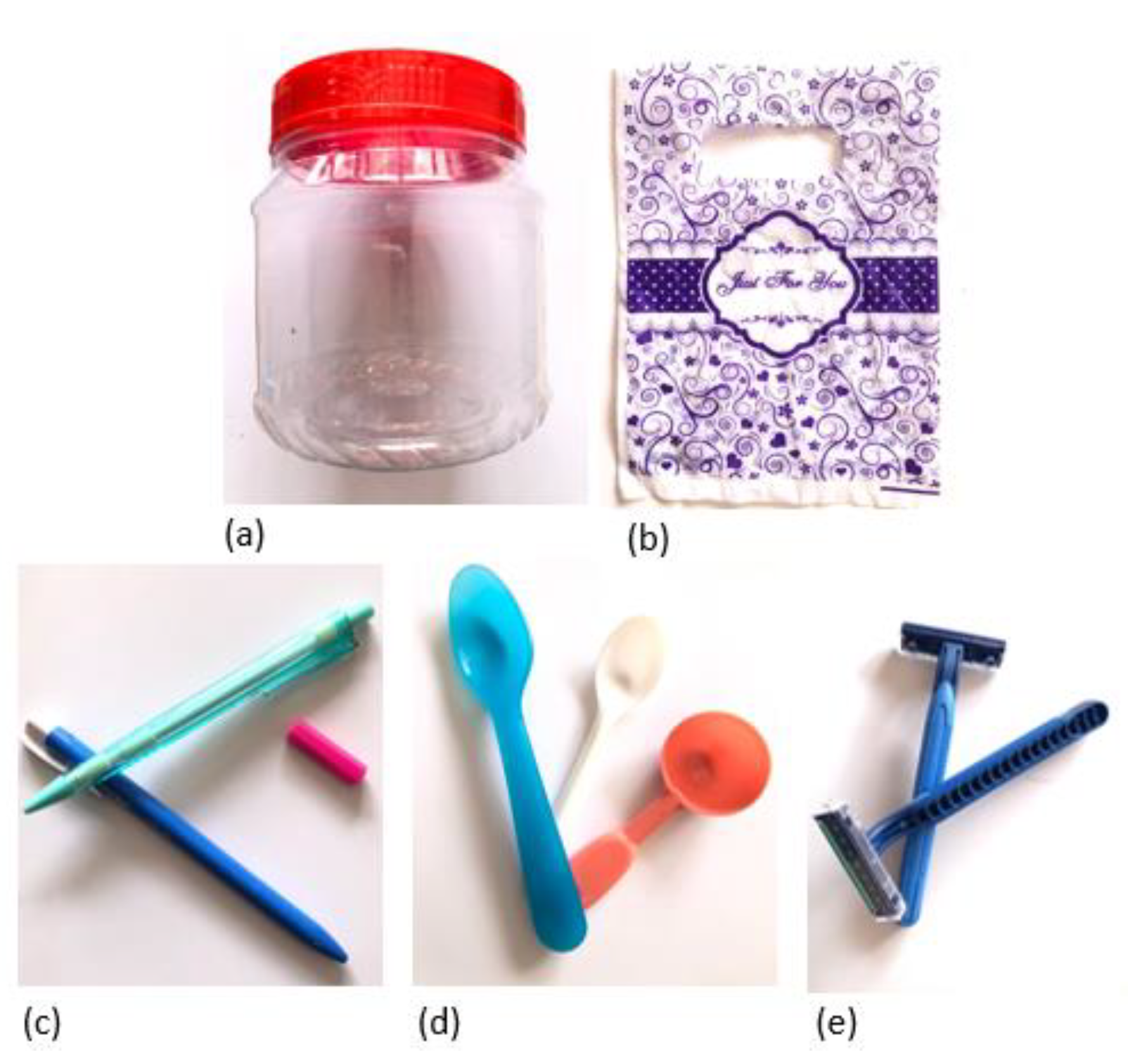
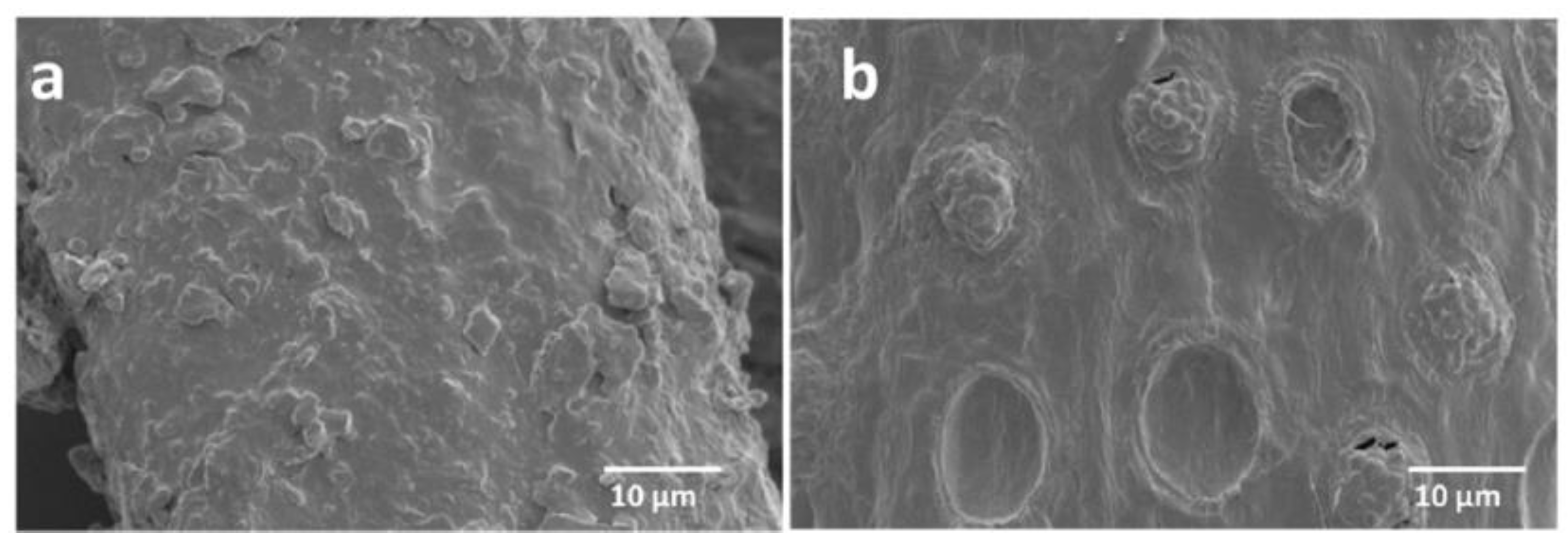
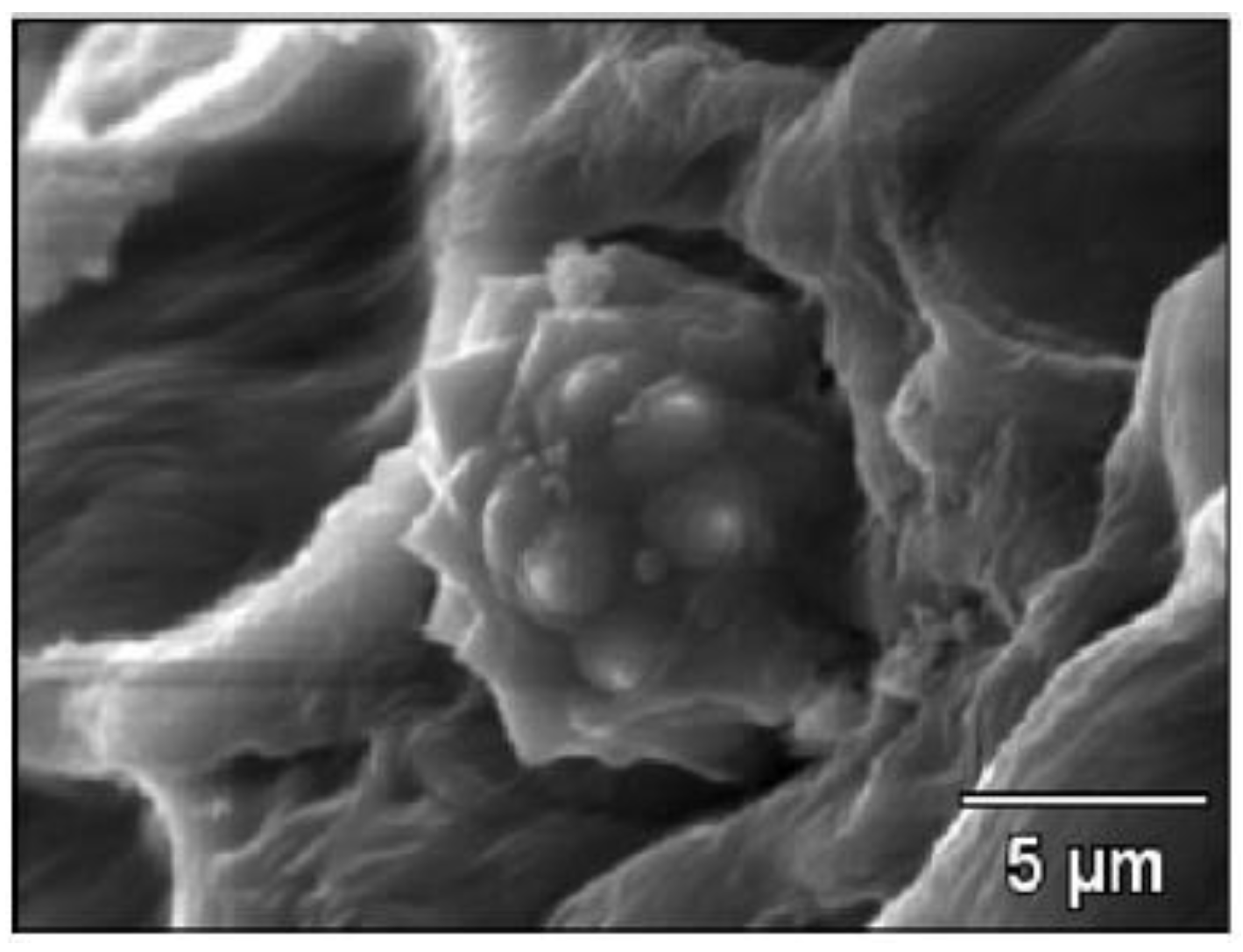
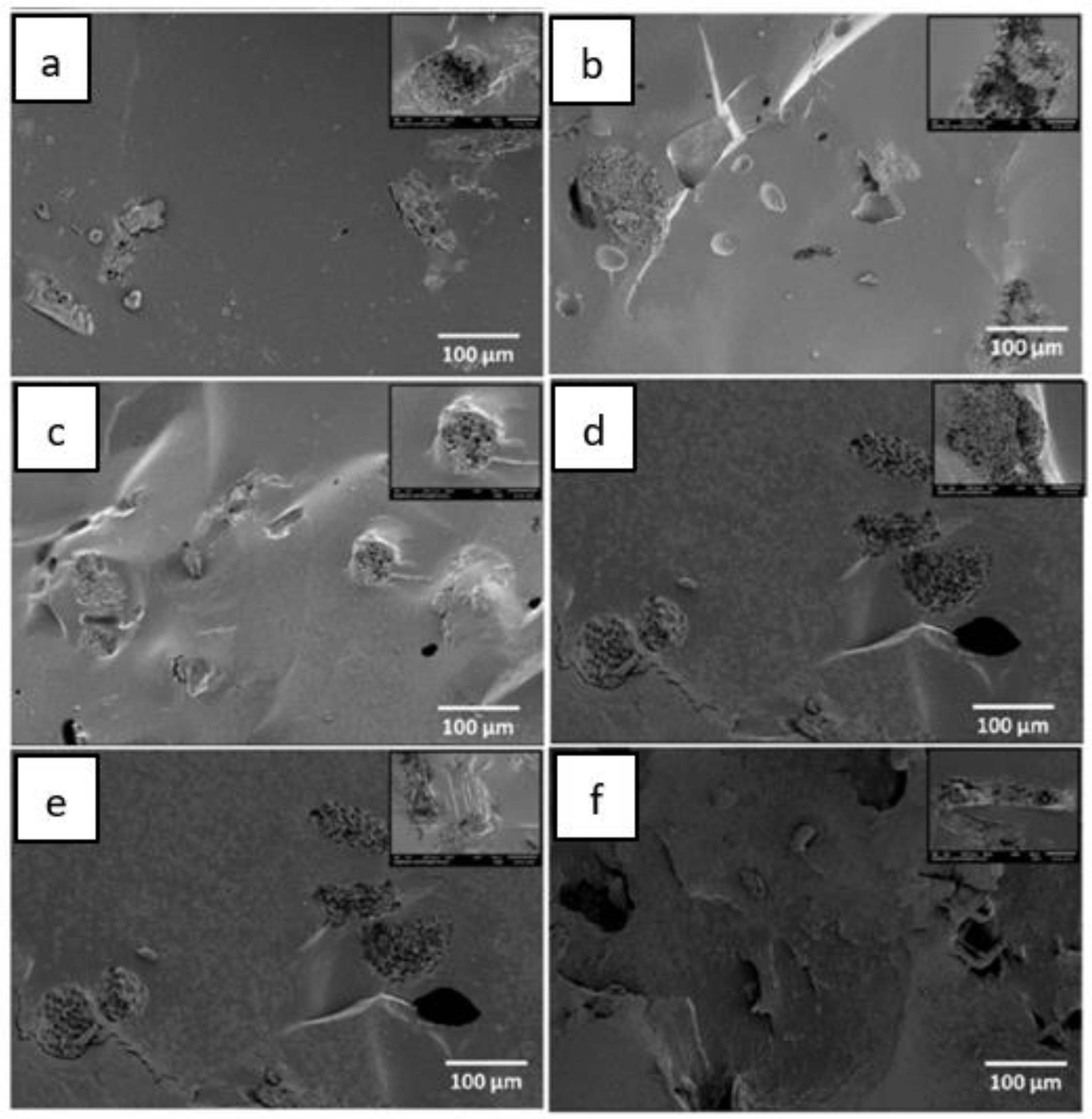
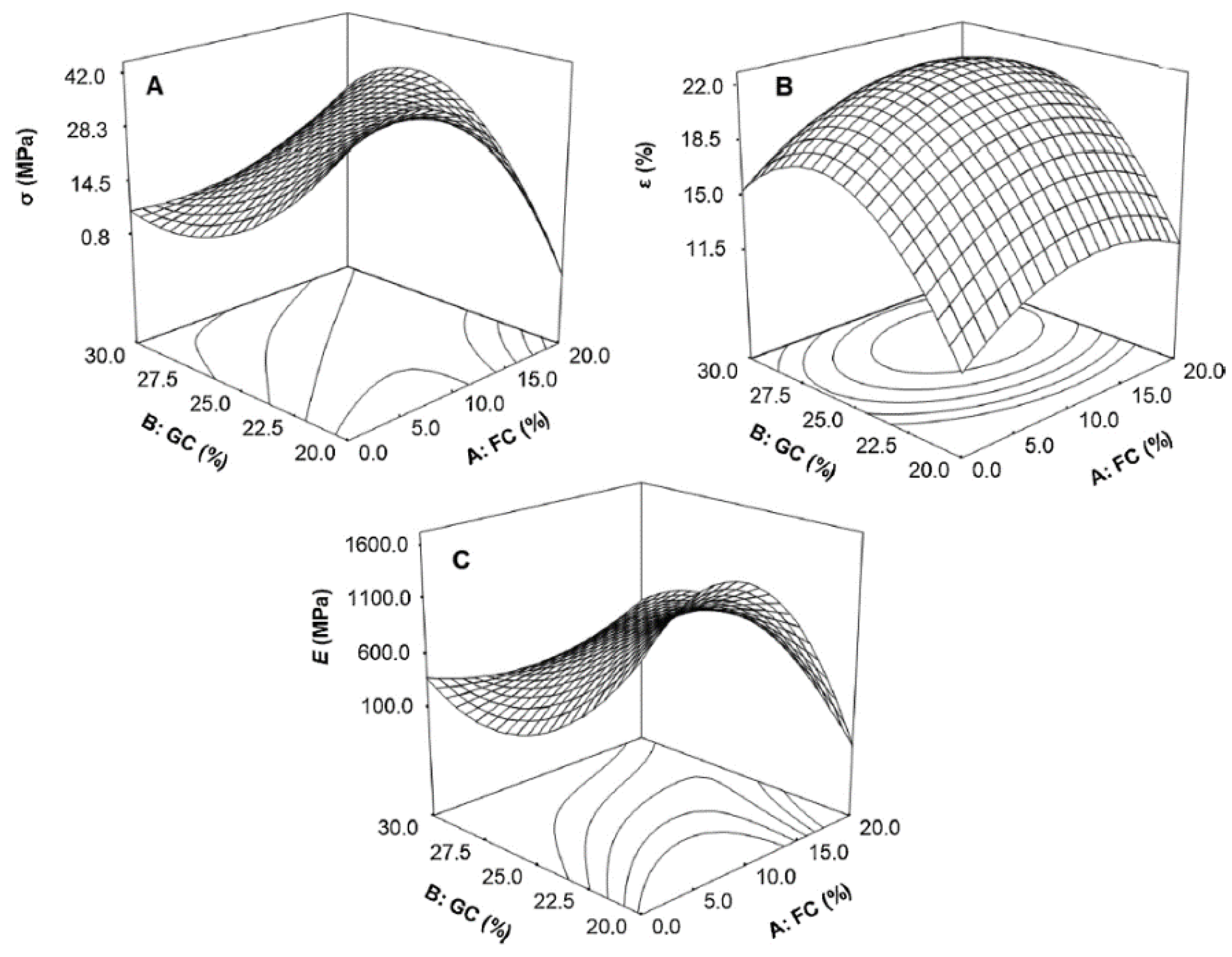
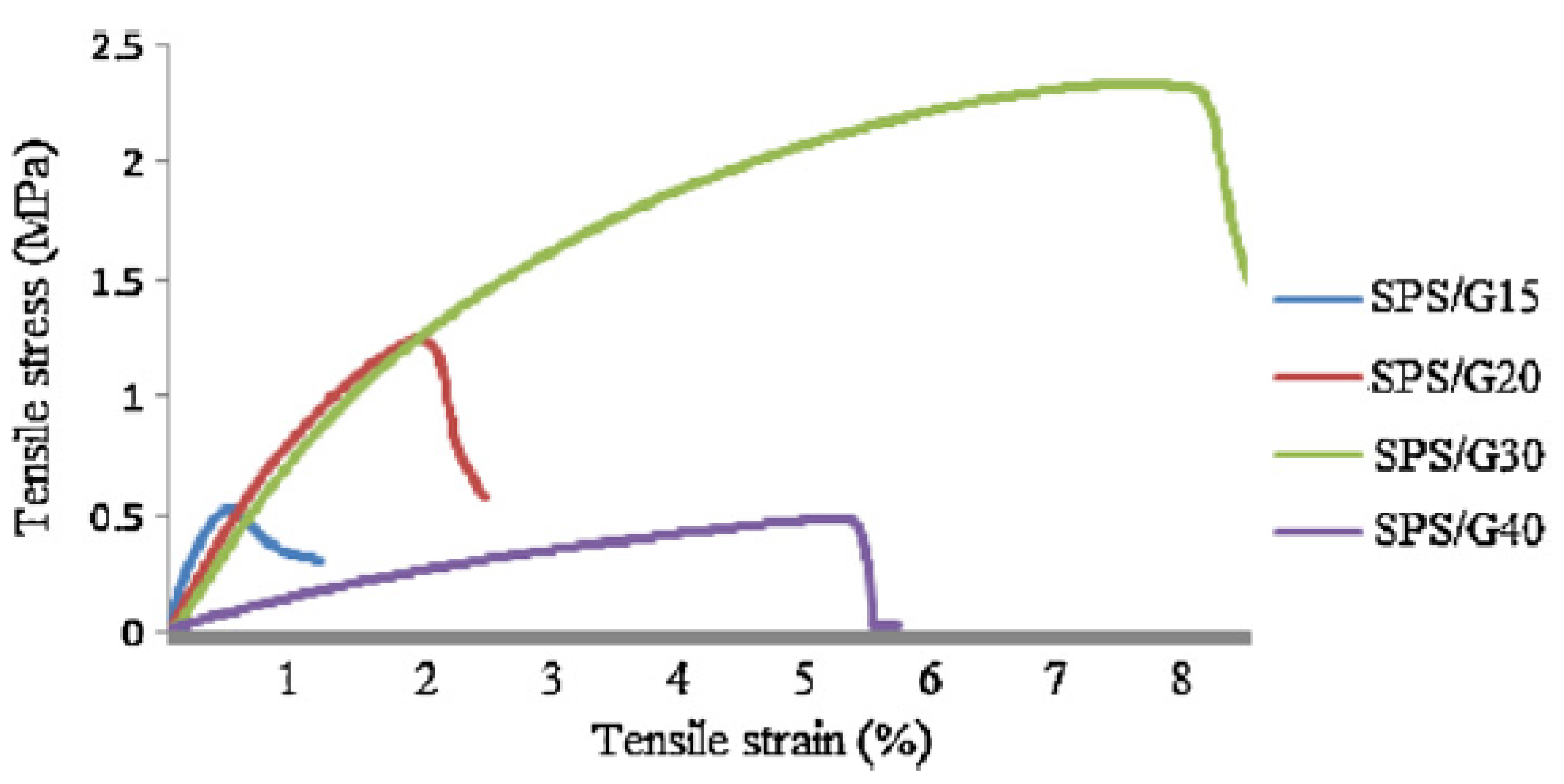
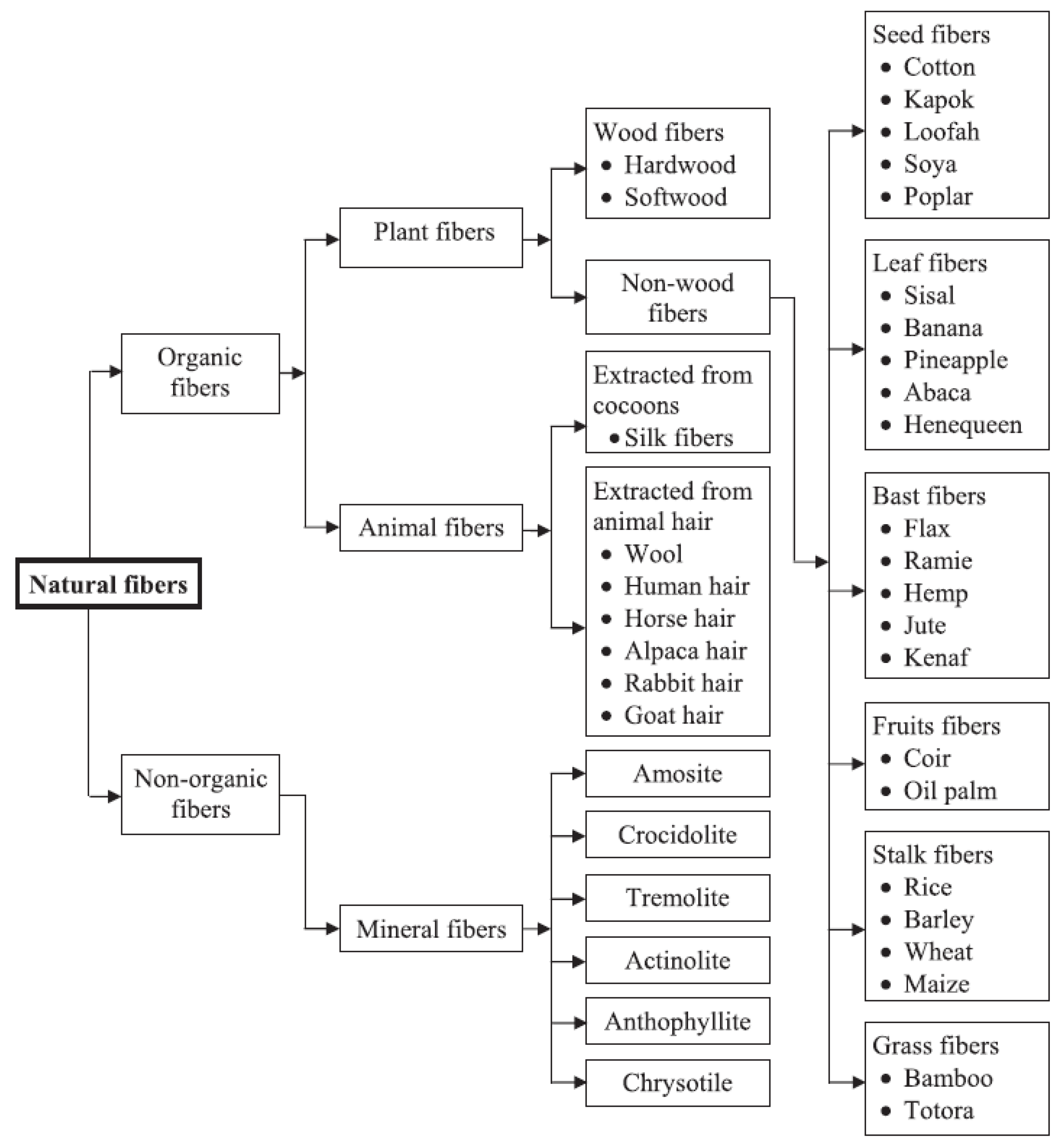
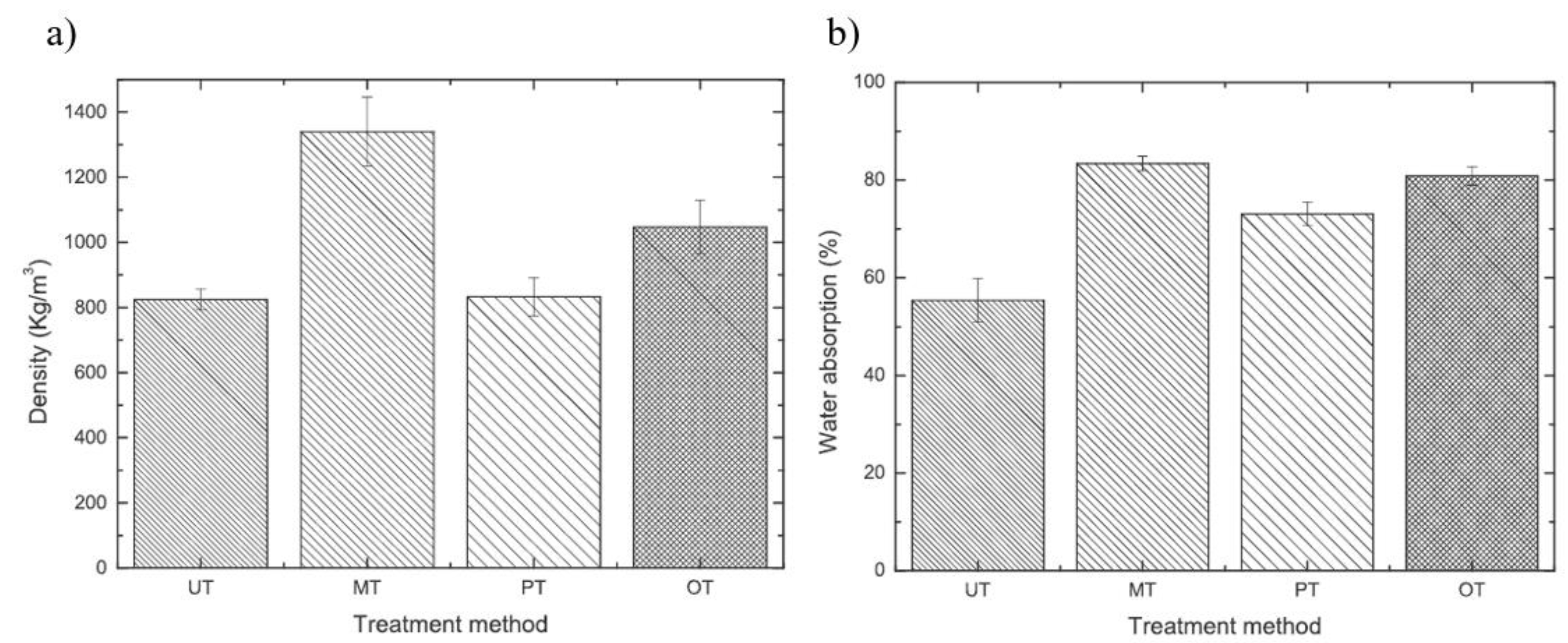
| Type of Starch | Type of Filler/Polymer | Potential Application | Ref. |
|---|---|---|---|
| Cassava | Kraft | Biodegradable tray with chitosan coating | [6] |
| Cassava | Orange, sugarcane, malt bagasse | Biodegradable tray, packaging material | [3] |
| Cassava | Cogon grass | Biodegradable material | [7,25] |
| Tapioca | Bamboo | Biodegradable ‘green’ plastic | [17] |
| Cassava | Sugar palm | Biodegradable polymer | [6] |
| Cassava | Grape stalks | Food packaging plastic | [20] |
| Cassava | Cassava bagasse | Food packaging plastic | [18] |
| Type of Starch | Type of Filler/Polymer | Potential Application | Reference |
|---|---|---|---|
| Corn | Sugarcane | Green material for packaging | [46] |
| Corn | Microalgae | Bioplastic, i.e., packaging, catering products, electronic devices | [47] |
| Corn | Cassava, ahipa peels and baggase | Bio-based composite | [19] |
| Corn | Talc nanoparticles | Bio-nanocomposite food packaging | [48,49] |
| Corn | Nanocrystalline cellulose | Bio-film and bio-nanocomposite | [50] |
| Corn | Sunflower seed fried oil | Potential natural plasticizer | [38] |
| Corn | PLA blends | Bio-degradable polymer | [51] |
| Corn | Cornhusk/sugar palm | Hybrid bio-composite | [52] |
| Test Type | GC (%) | FC (%) | Result |
|---|---|---|---|
| Tensile Test, | 24–28 | 10–15 | Highest value achieved at 35MPa. |
| Elongation, | 24–28 | 5–15 | Highest value achieved at 21.7% |
| Young Modulus, | 24–28 | 10–15 | Highest value achieved at 1433.8 MPa |
| Type of Starch | Type of Filler/Polymer | Potential Application | Reference |
|---|---|---|---|
| Sugar palm | - | Biodegradable material | [1] |
| Sugar palm | - | Biodegradable packaging film | [32] |
| Sugar palm | Agar blends | Bio-based polymer | [55,56] |
| Sugar palm | Agar blends, seaweed | Bio-based polymer | [57] |
| Sugar palm | Sugar palm fibre | Bio-nanocomposite material, food packaging | [52,53,58] |
| Sugar palm | Agar blends, sugar palm fibre, seaweed | Hybrid bio-composite | [36] |
| Natural Fibres | Synthetic Fibres | |
|---|---|---|
| Density | Light | Twice natural fibres |
| Cost | Low cost | Higher than natural fibres |
| Renewability | Yes | No |
| Recyclability | Yes | No |
| Energy Consumption | Low | High |
| Distribution | Wide | High |
| CO2 neutral | Yes | No |
| Health risk when inhaled | No | Yes |
| Disposal | Biodegradable | Yes, not biodegradable |
| Blends | Application | Reference |
|---|---|---|
| Starch/plasticizer | • Biodegradable packaging | [1] |
| • Starch based film material | [32] | |
| • Disposable eating utensils | [38] | |
| Starch/PVA | • Water-soluble laundry bags | [61] |
| • Biomedical and clinical field | [66] | |
| • Replacement of polystyrene | [63] | |
| Starch/PLA | • Biodegradable tray | [68] |
| • Electronic devices, pharmaceutical | [62] | |
| Starch/PBS | • Packaging materials, fisheryAutomotive | [61,65] |
| Starch/natural fibre | • Food packaging | [20,25] |
| • Biodegradable material | [22,58,68] |
Publisher’s Note: MDPI stays neutral with regard to jurisdictional claims in published maps and institutional affiliations. |
© 2021 by the authors. Licensee MDPI, Basel, Switzerland. This article is an open access article distributed under the terms and conditions of the Creative Commons Attribution (CC BY) license (https://creativecommons.org/licenses/by/4.0/).
Share and Cite
Diyana, Z.N.; Jumaidin, R.; Selamat, M.Z.; Ghazali, I.; Julmohammad, N.; Huda, N.; Ilyas, R.A. Physical Properties of Thermoplastic Starch Derived from Natural Resources and Its Blends: A Review. Polymers 2021, 13, 1396. https://doi.org/10.3390/polym13091396
Diyana ZN, Jumaidin R, Selamat MZ, Ghazali I, Julmohammad N, Huda N, Ilyas RA. Physical Properties of Thermoplastic Starch Derived from Natural Resources and Its Blends: A Review. Polymers. 2021; 13(9):1396. https://doi.org/10.3390/polym13091396
Chicago/Turabian StyleDiyana, Z. N., R. Jumaidin, Mohd Zulkefli Selamat, Ihwan Ghazali, Norliza Julmohammad, Nurul Huda, and R. A. Ilyas. 2021. "Physical Properties of Thermoplastic Starch Derived from Natural Resources and Its Blends: A Review" Polymers 13, no. 9: 1396. https://doi.org/10.3390/polym13091396
APA StyleDiyana, Z. N., Jumaidin, R., Selamat, M. Z., Ghazali, I., Julmohammad, N., Huda, N., & Ilyas, R. A. (2021). Physical Properties of Thermoplastic Starch Derived from Natural Resources and Its Blends: A Review. Polymers, 13(9), 1396. https://doi.org/10.3390/polym13091396










